Posts Tagged: UC San Diego
Professor James Nieh: Deciphering Honey Bee Communication
The fascinating world of honey bee communication! The next UC Davis Department of Entomology and Nematology seminar will feature...
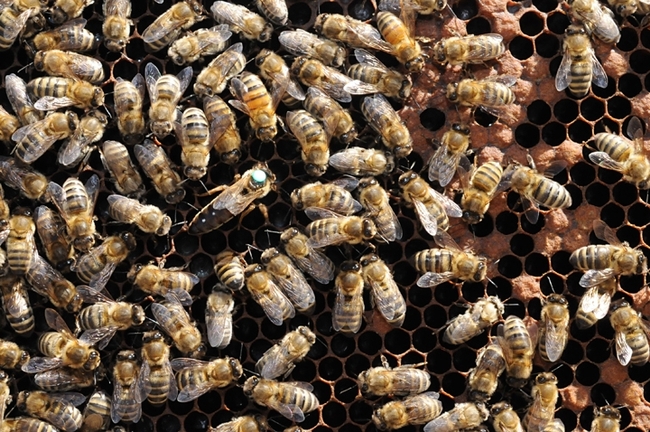
Honey bees at work in the hive. (Photo by Kathy Keatley Garvey)
UC Network Formed to Strengthen Honey Bee Health and Crop Pollination
It's good to see the University of California's Office of the President award a three-year $900,000 grant to four UC Davis campuses to establish a...
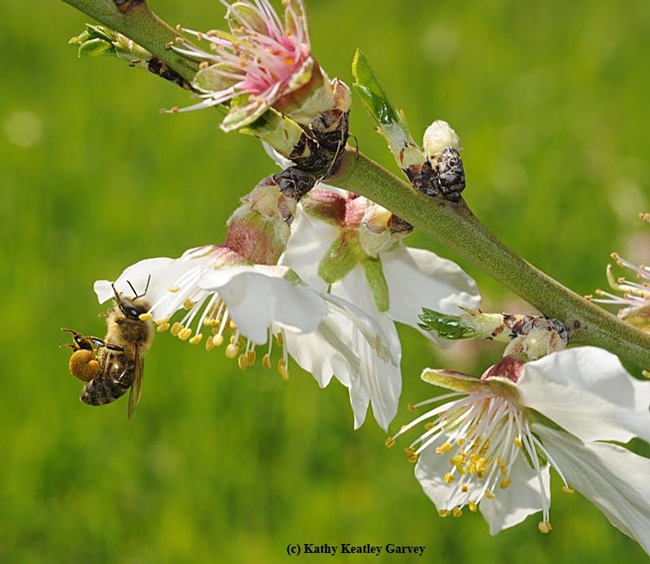
A honey bee packing pollen on almond blossoms on the UC Davis campus. California almonds usually begin blooming around Feb. 14. (Photo by Kathy Keatley Garvey)
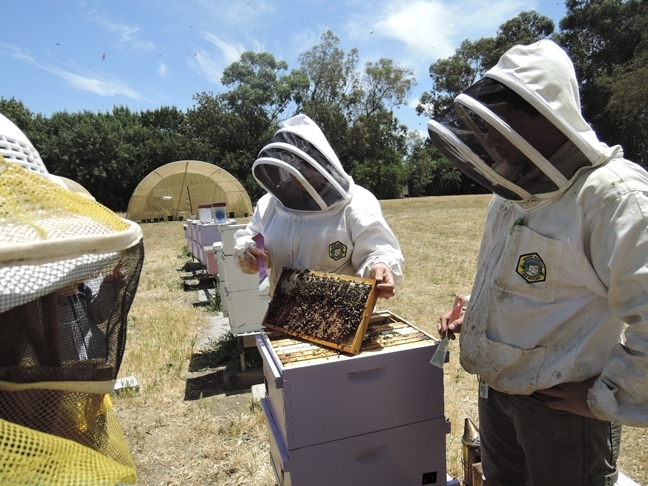
Extension apiculturist Elina Lastro Niño (center) of UC Davis is a co-principal investigator. (Photo by Kathy Keatley Garvey)
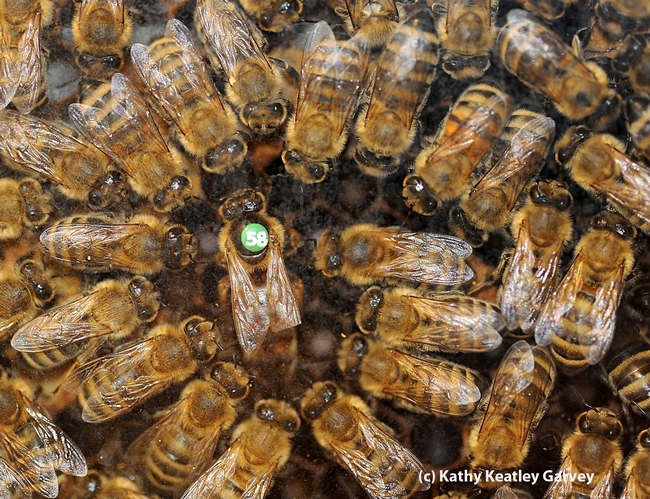
A queen bee and her retinue. (Photo by Kathy Keatley Garvey)
Zeroing in on the Deadly Game Between Honey Bees and Their Predators
If you're around honey bees, you've seen their predators: crab spiders, orb weavers, praying mantids, birds and more. It's a tough world out there...
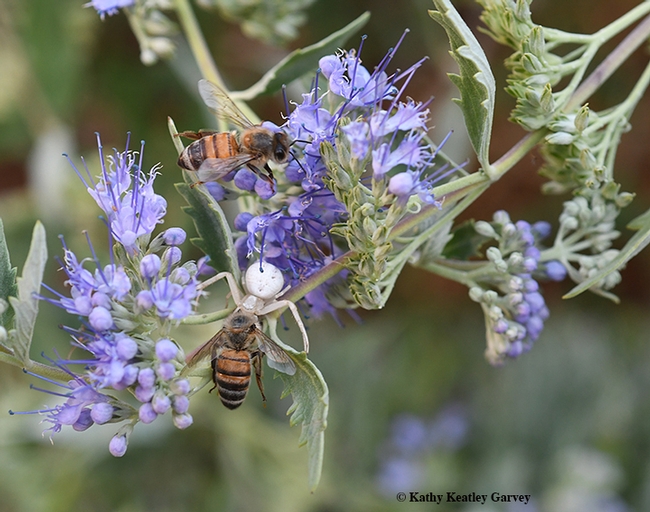
A crab spider nails a honey bee while another honey bee watches. This image, on bluebeard, Caryopteris x clandonensis, was taken in Vacaville, Calif. (Photo by Kathy Keatley Garvey)
Pollinator Habitat: Important Part of Solar Energy Study
Solar energy should not only be used to benefit global sustainability, but to protect our global ecological systems, including climate, air quality,...
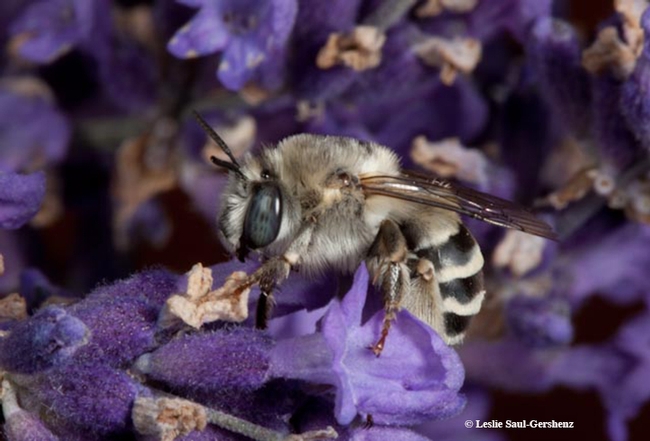
Solar energy can be used to protect pollinator habitat, according to a research paper published July 9 in the journal Nature. This is Anthophora urbana, a ground-nesting solitary bee which has a broad distribution including the Mojave Desert. It is a floral generalist collecting pollen and nectar from many species of plants, says UC Davis entomologist Leslie Saul-Gershenz. (Photo by Leslie Saul-Gershenz)
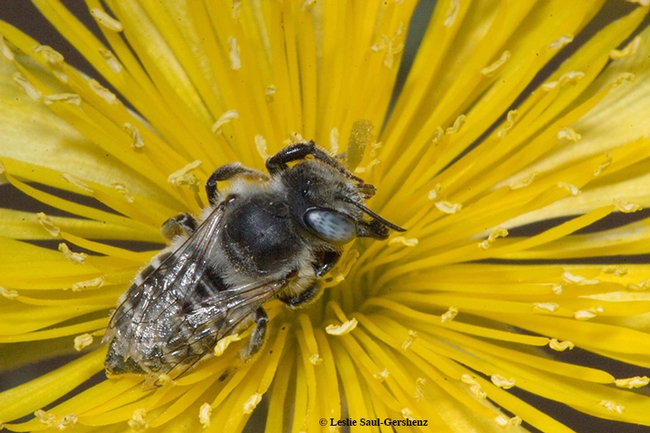
Native bee Megachile sp. on Mentzelia flower in the Mojave Desert. (Photo by Leslie Saul-Gershenz)
Africanized Bees: How Far North?
Africanized honey bees arrived in southern California in 1994 and are expanding north. How far north are they now? That's the question being asked...
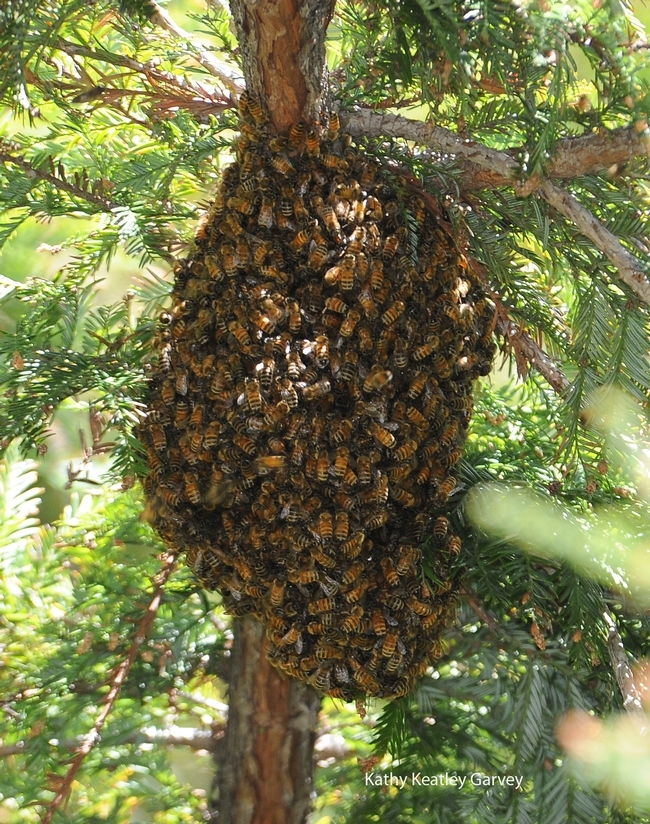
Collection of Africanized bee swarms can be an issue. These bees are European honey bees (not Africanized) that swarmed on the UC Davis North Hall/Dutton Hall complex in 2012. (Photo by Kathy Keatley Garvey)

Scientists are studying feral colonies for Africanized bee expansion. This photo was taken in 2011 in a Vacaville backyard; the European honey bee colony was a joy to the homeowner until its collapse. (Photo by Kathy Keatley Garvey)

